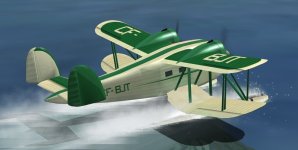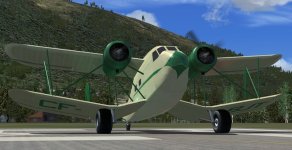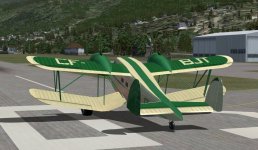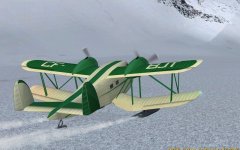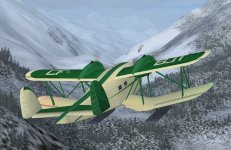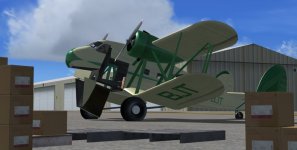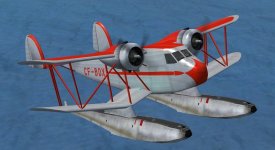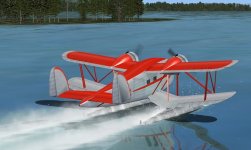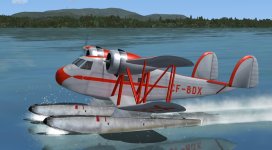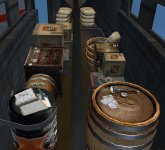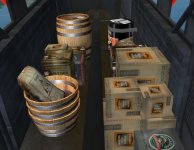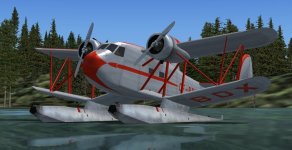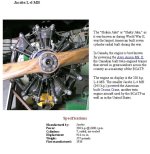Fleet 50
From Wikipedia, the free encyclopedia
50 Freighter
Role General utility aircraft
Manufacturer Fleet Aircraft
First flight 1938
Number built 5
The Fleet 50 Freighter was a twin-engine biplane Canadian general utility aircraft designed and built by Fleet Aircraft. This peculiar-looking aircraft had promise as a freighter and general use aircraft, but it was underpowered and only five were built.
Development
Design was started in 1936 to create a general purpose twin-engined utility aircraft for the Canadian market. It was designed as a short take-off freighter with features added to ease cargo handling. The Freighter was a biplane with the lower wing an inverted gull wing with either a float or wheel landing gear. Two radial piston engines were mounted in nacelles on the upper wing panels.
The fuselage structure was welded steel tubing with duralumin formers, and a semi-monocoque duralumin nose section. The wings were stressed-skin metal structure on the inboard panels and fabric-covered wood beams and duralumin ribs on the outboard panels. The fuselage had room for two crew and up to ten passengers. Large doors and a roof-mounted chain hoist were fitted for use in the cargo role.
The prototype designated the 50J first flew on 22 February 1938, powered by two 285 hp (213 kW) Jacobs L-5MB 7-cylinder radial engines. It was later re-engined with 330 hp Jacobs L-6MB engines and re-designated the 50K. A further four aircraft were built, all with L-6MB engines.
None of the aircraft was operated for long, as the design was underpowered and could not maintain altitude on only one engine.
Specifications (50K landplane)
Data from The Illustrated Encyclopedia of Aircraft (Part Work 1982-1985), 1985, Orbis Publishing, Page 1817
General characteristics
Crew: 2
Capacity: 10 passengers or freight
Length: 36 ft 0 in (10.97 m)
Wingspan: 45 ft 0 in (13.72 m)
Height: 13 ft 1 in (3.99 m)
Wing area: 528 ft² (49.05 m²)
Empty weight: 4600 lb (2087 kg)
Gross weight: 8326 lb (3777 kg)
Powerplant: 2 × Jacobs L-6MB 7-cylinder radial engine, 330 hp (246 kW) each
Performance
Maximum speed: 150 mph (241 km/h)
Range: 650 miles (1046 km)
Service ceiling: 15,000 ft (4570 m)
--------------------------------------------------------------------
From: The Illustrated Encyclopedia of Aircraft (Part Work 1982-1985). London: Orbis Publishing, 1985, p. 1817.
Design was started in 1936 to create a general purpose twin-engined utility aircraft for the Canadian market. It was designed as a short take-off freighter with features added to ease cargo handling. The Freighter was a biplane with the lower wing an inverted gull wing with either a float or wheel landing gear. Two radial piston engines were mounted in nacelles on the upper wing panels.
The fuselage structure was welded steel tubing with duralumin formers, and a semi-monocoque duralumin nose section. The wings were stressed-skin metal structure on the inboard panels and fabric-covered wood beams and duralumin ribs on the outboard panels. The fuselage had room for two crew and up to ten passengers. Large doors and a roof-mounted chain hoist were fitted for use in the cargo role.
The prototype designated the 50J first flew on 22 February 1938, powered by two 285 hp (213 kW) Jacobs L-5MB 7-cylinder radial engines. It was later re-engined with 330 hp Jacobs L-6MB engines and re-designated the 50K. A further four aircraft were built, all with L-6MB engines.
None of the aircraft was operated for long, as the design was underpowered and could not maintain altitude on only one engine. The last aircraft went out of service in 1946. The remains of one airframe are held by the Canada Aviation and Space Museum.
The Fleet 50 was planned as a twin-engine transport for use in the north. It was designed to be strong, and easy to maintain, able to handle bulky, awkward loads. Rugged simplicity was to be its essence. Only five were built. The advent of Second World War and a few misfortunes, such as one Freighter burning to the ground during a demonstration in Chicago, doomed this interesting bush plane to a short career. The last two ended their flying days in 1946.
Although there were complaints about its lack of power, the Freighter was valued for its ability to handle oversized loads. A nose-door opened to expose an unobstructed compartment running the length of the fuselage underneath the cockpit and the cargo floor. Nose-loading cargo planes became common in later years.

